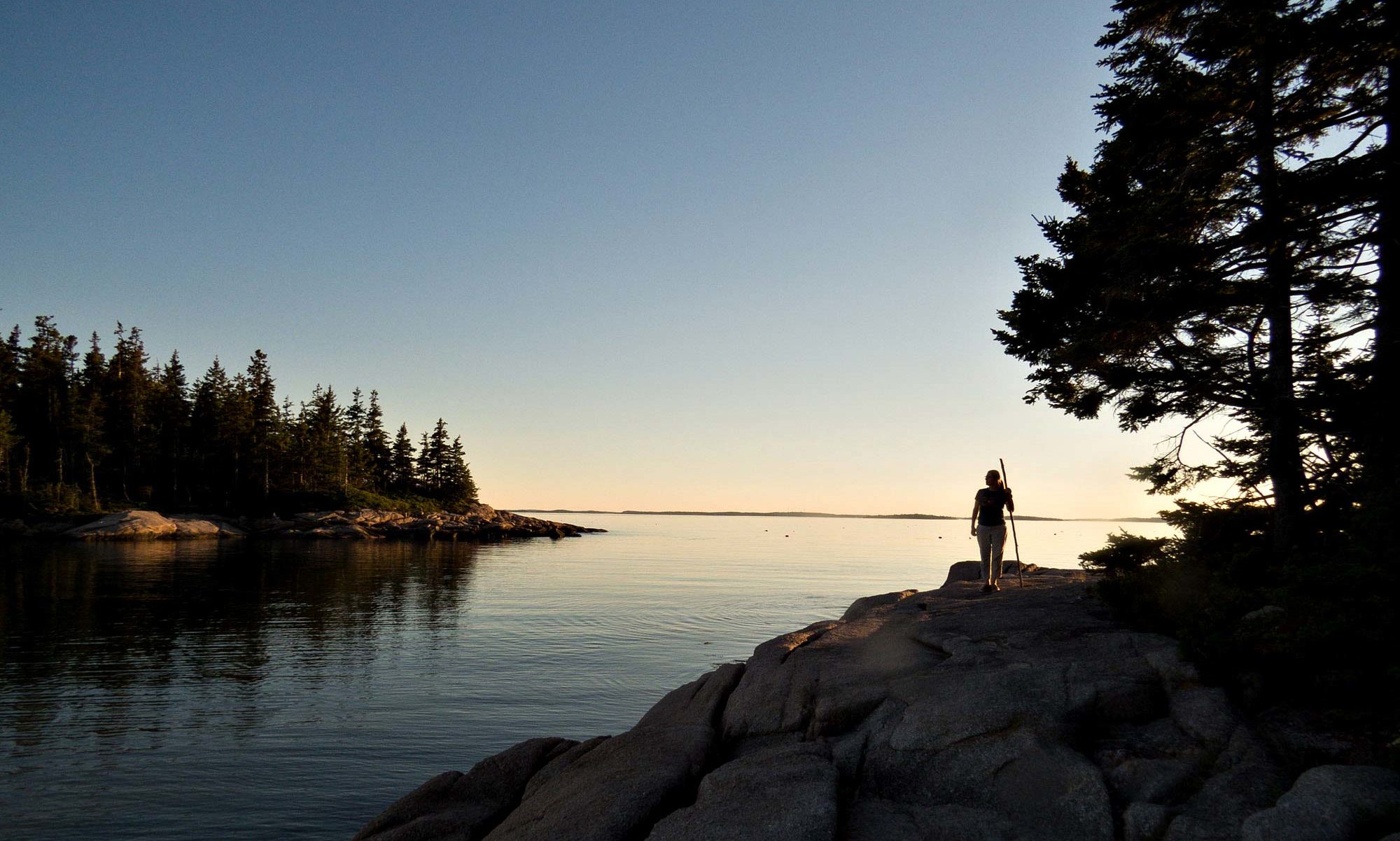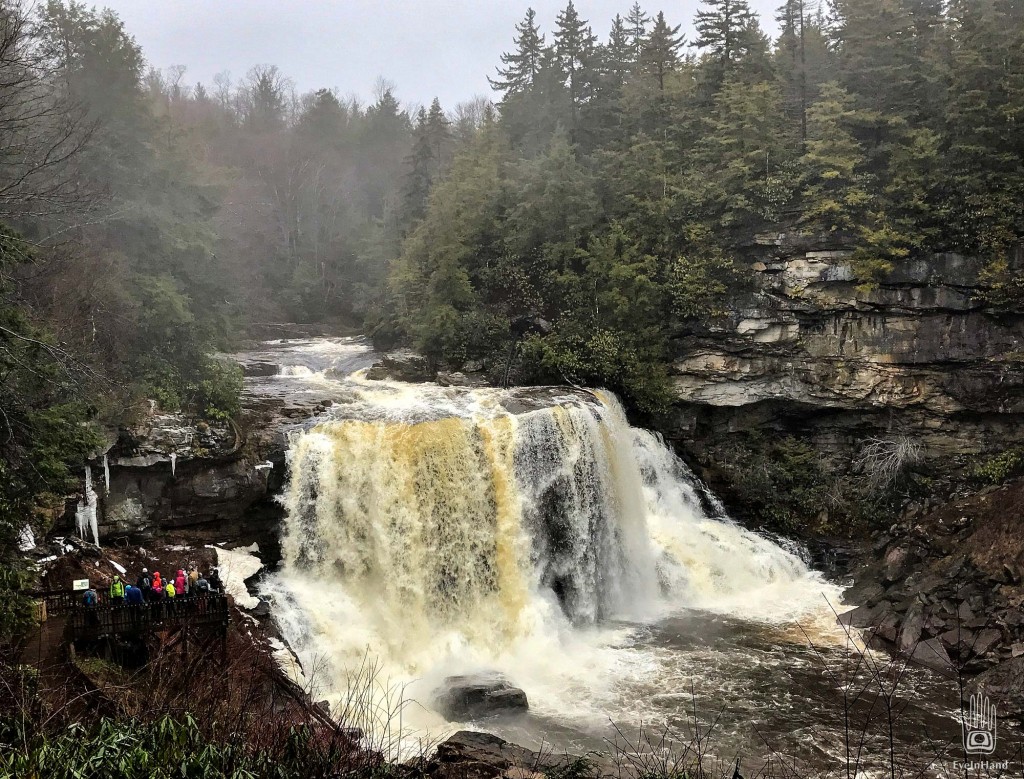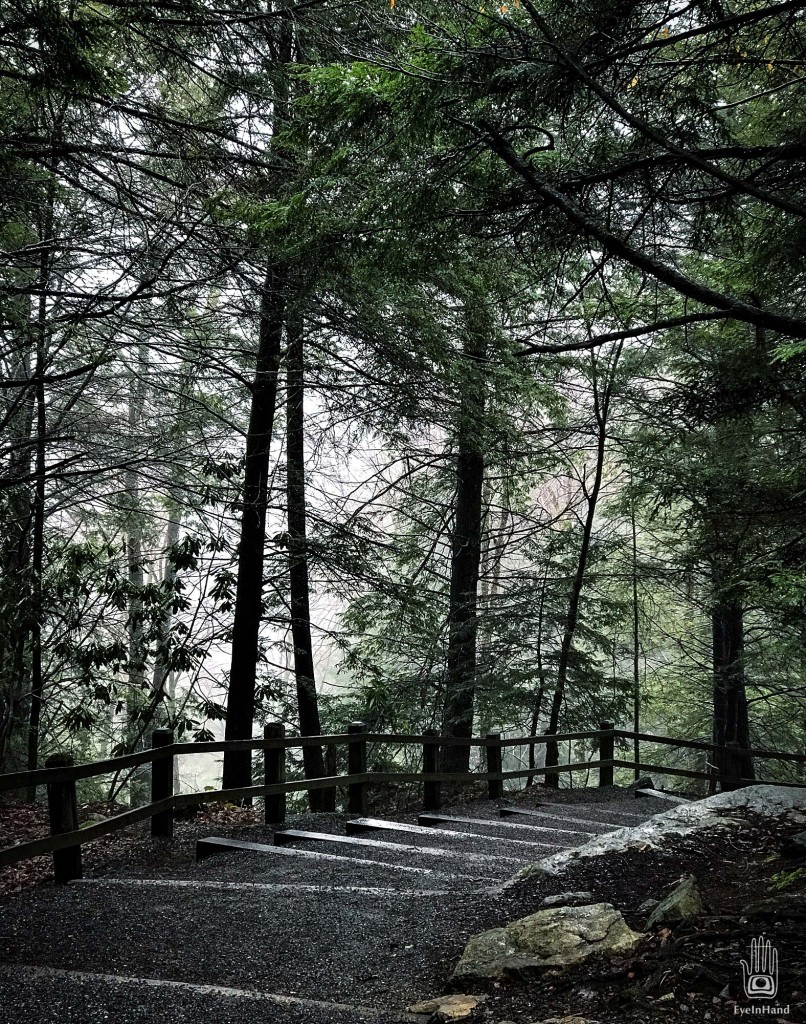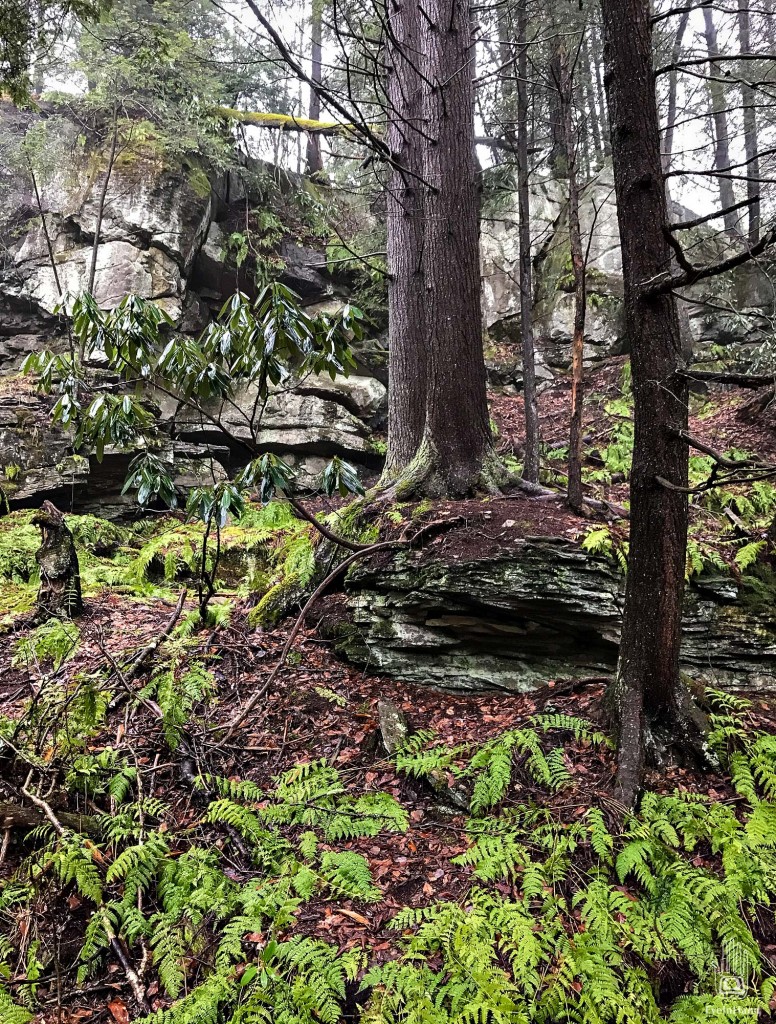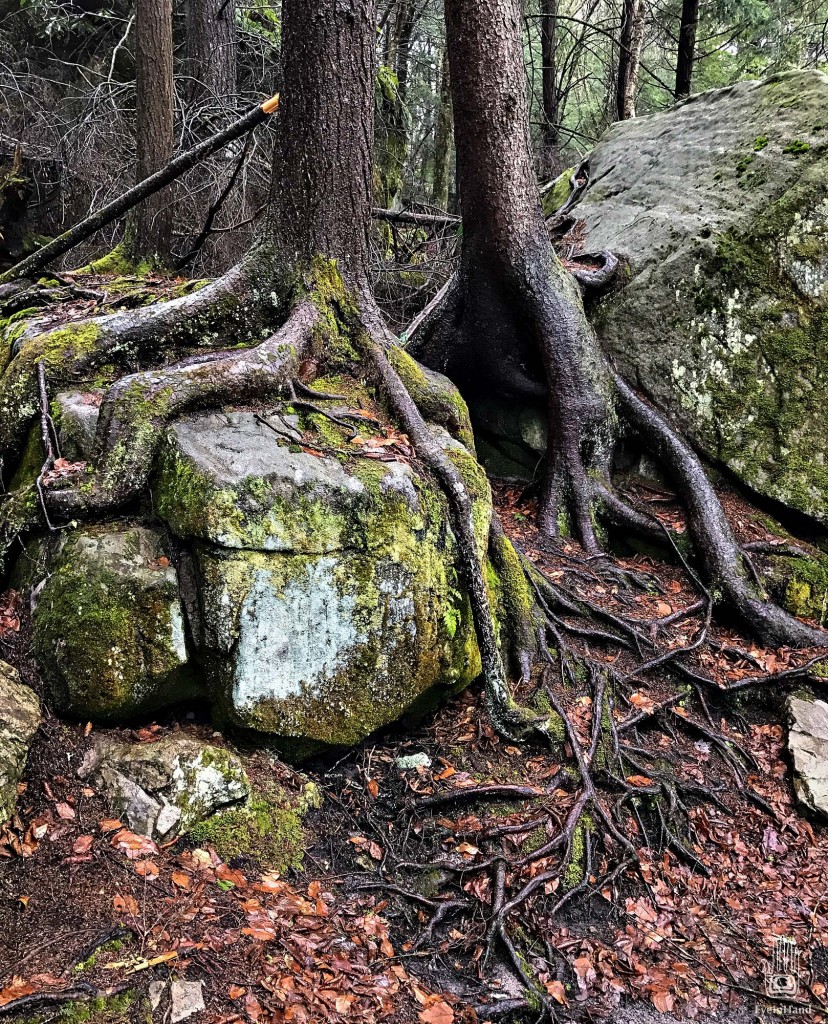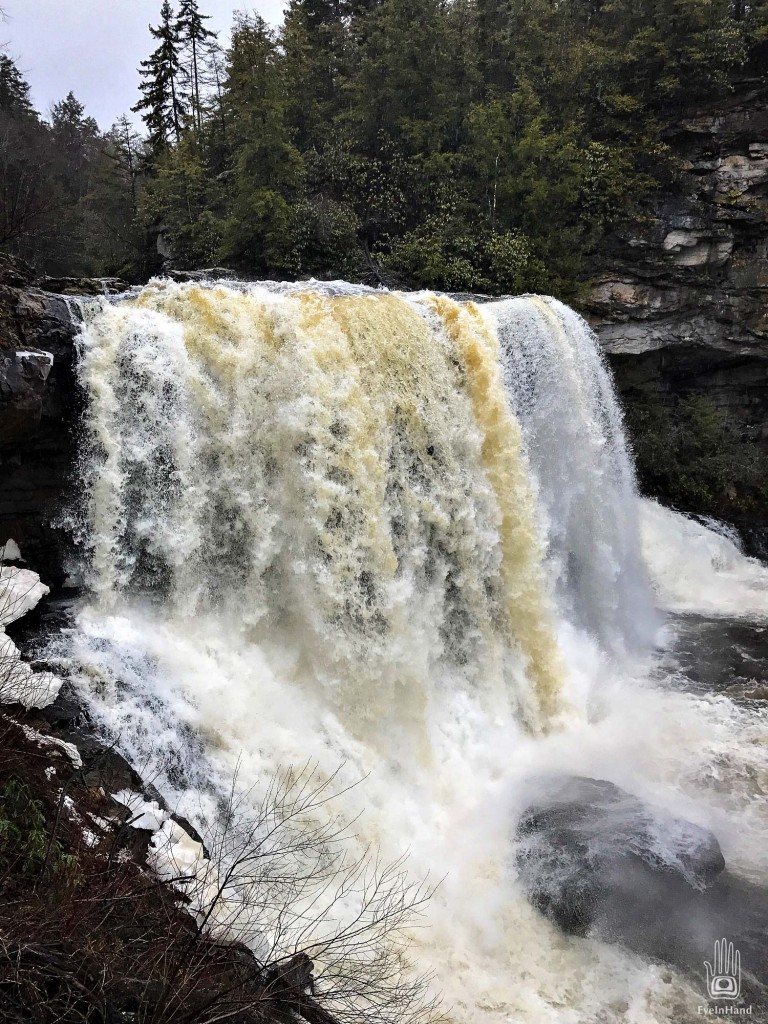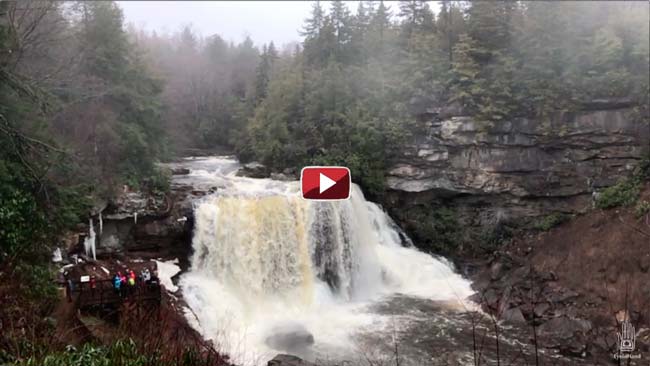Blackwater Falls
First stop on the trek is right across the river from Davis, in Blackwater Falls State Park. In precise geological terms, Davis is just outside Canaan Valley. The Blackwater River emerges from the valley interior, seeping from the bogs and swamps that cover the valley floor. Gathering itself together, it meanders north where eons ago it cut a gap through the raised lip of the bowl, where it passes in front of Davis before tumbling over a set of spectacular falls. From there it carves a canyon down through the mountains on its way to the Ohio River. Canaan Valley sits on the Allegheny Ridge, an eastern Continental Divide deep in the Appalachians. Water on the eastern side of the ridge flows toward the Chesapeake Bay and the Atlantic, water on the west side flows north and west, into the Mississippi and down to the Gulf of Mexico.
The route taken. Link to map.
Canaan and Dolly Sods, the valley abutting it to the east, are environmental anomalies. Wide shallow bowls perched high in the peaks like nests in a tree, they form the highest valleys east of the Mississippi at over 3000 feet. The altitude, surrounded on all sides by mountains, creates a microclimate of plants and weather more typical of the Canadian tundra, 500 miles to the north. Over 8000 acres of peat bogs, cranberry and heather fill the valley floor, forming the second largest inland wetland in the US.
And snow. Canaan Valley, though at the same latitude as St. Michaels to the east, receives an average of 12 feet of snow a year. Its growing season is three months shorter than Fairbanks, Alaska. In the winter of 1995 over 21 feet of snow fell, and below freezing temperatures are on record for every month of the year. It’s a real geological and climatalogical oddity.
But the past two winters have brought little snow, and this is hurting the local economy. Once boom towns for timber and coal, Davis and nearby Thomas are now quite small, the old storefronts occupied by cozy cafes and galleries. Like the three valley ski resorts, everyone relies on long seasons of deep snow to bring winter sport enthusiasts from the cities with money to spend. Last year there was only had one significant snowfall. Granted, it was hip deep and came all at once, but it didn’t stay long.
Wth days of rain ahead, and no snow, we have the park almost to ourselves. Fog is tangled in the forest of balsam and fir, where a long series of wooden steps cascade down the gorge toward the rising roar of the falls.
The falls are as high as a six story building. From where we first see them, only some other foiled skiers near the base give a sense of their scale.
Ice clings to the cliff face where the sun doesn’t reach. Near the falls there’s a sound of thunder you can feel in your chest. With all the rain, and melt of the season’s only snowfall the previous week, there’s a lot of water trying to get out of here.
Later, when I show these photos to our guide back at the B&B, she says she will make a special trip to see it that afternoon. In ten years she’s never seen so much water going over the falls.
